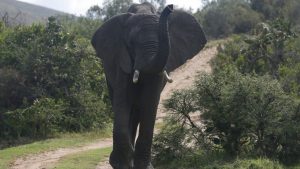My friend Lynn likes her gin.
But as a fellow food safety type she may not approve of this.
The makers of a South African gin infused with elephant dung swear their use of the animal’s excrement is no gimmick.
The creators of Indlovu Gin, Les and Paula Ansley, stumbled across the idea a year ago after learning that elephants eat a variety of fruits and flowers and yet digest less than a third of it.
“As a consequence, in the elephant dung, you get the most amazing variety of these botanicals,” Les Ansley said during a recent visit to their operations. “Why don’t we let the elephants do the hard work of collecting all these botanicals and we will make gin from it?” he recalled his wife suggesting.
Her idea came after a safari during which a wildlife ranger described an elephant’s digestive process.
After about five sizeable bags of dung are collected for a batch of 3,000 to 4,000 bottles of the gin, the droppings are dried and crumbled, then washed to remove dirt and sand. Eventually only the remains of the fruits, flowers, leaves and bark eaten by the elephants are left behind.
Those botanicals are then sterilized and dried again and placed in an airing cupboard. Think of it like a “spice cupboard,” Ansley said. Eventually, the remains are infused in the gin.





